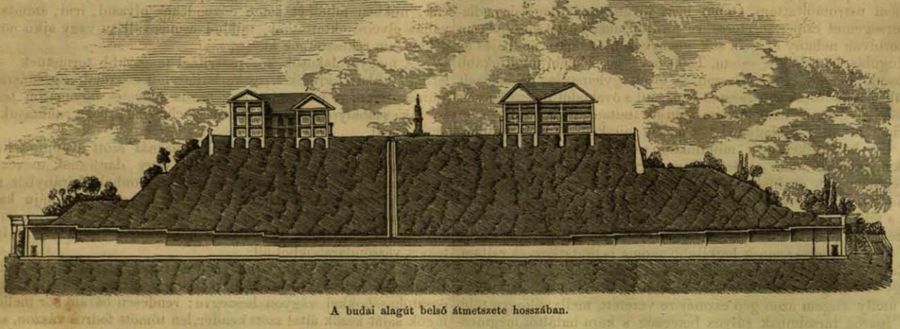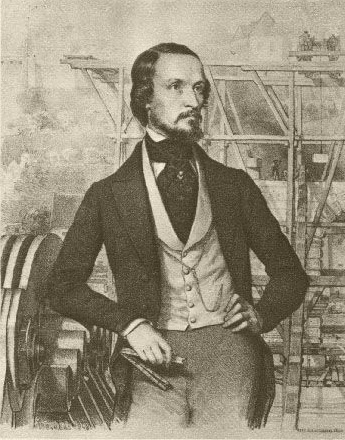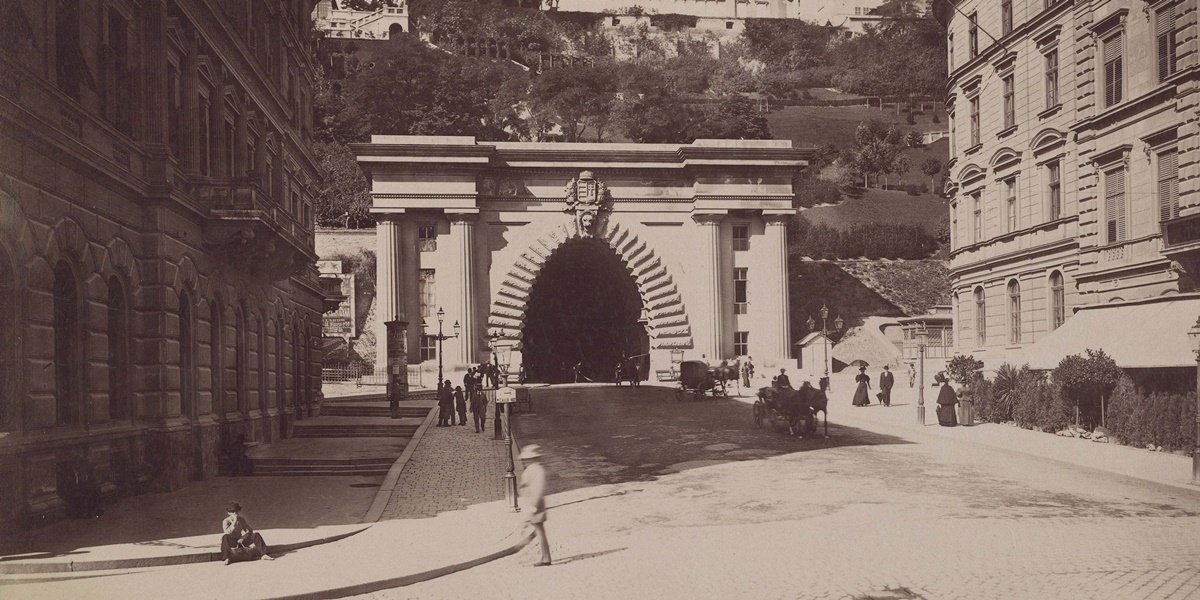An obvious question arises, if they knew the Chain Bridge was in the wrong place, why was it built where it stands? The reason was simply technical and forced the hand of the designer William Tierney Clark.
The bridge — one of the largest and most modern bridges of its time — simply could not be built elsewhere. The river was narrower to the south, and officials were wary of narrowing it further for two reasons: the pillars themselves could raise the water level, and they could cause floods if ice were caught on them in the winter.

Dániel Novák's plans for a tunnel from 1837 (Soruce: István Darvas: A budai alagút ismeretlen első tervezői és tervei, //'The unknown early designers and plans of the Buda tunnel'//, Városi Szemle, 1946.)
To the north, the river was too wide to use the technology of the time to build a bridge that could span it. Furthermore, a sandbank stretched along the middle of the Danube as a continuation of Margit Island, meaning the river was not deepest at its centre.
As a result, Chain Bridge had to be built where it stands today. On the Pest side, there were no problems, the bridge connected to a mostly uninhabited northern area of the city, but in Buda, it ran into the foot of Castle Hill.
As the bridge served transportation between Pest and Buda and national purposes, roads from Transdanubia had to be connected to it somehow. This quickly gave life to the idea of a tunnel through Castle Hill. The first ideas and plans were born in the 1830s. However, there was no funding for the project.
To enable the construction of the first permanent bridge between Buda and Pest, the legal framework of creating public companies had been created. As a result, many believed that the tunnel should be built by a similar private company.

Cross-section of the tunnel in the 27 April 1856 issue of Vasárnapi Ujság. A shaft leads up into the Castle, but no lift was ever installed.
After long-running preparation, the founders finally met on the first Sunday of 1846, 4 January 4, to create the new business.
The “Buda tunnel company” was established, and the founders adopted thy bylaws that had been agreed beforehand. These were later shared with the general public. In 1846, the development was planned along the following lines:
A total of 2000 shares were to be issued, to raise a capital of 300,000 forints. A toll would have been charged for using the tunnel to cover the costs of construction.
Progress was slow; shares were still for sale in 1848. Meanwhile, members of the company were debating who should build the tunnel.
István Széchenyi, the count behind the construction of Chain Bridge, naturally participated in this initiative. He recommended Tierney Clark and even commissioned drawings and plans from the engineer. Other investors would rather have had a Hungarian design the tunnel. It should be noted that there had been strong support for a Hungarian to design the bridge itself when the previous project began.
The company's bylaws only stipulated that the engineer entrusted with the construction must be proficient in his field and chosen by a general assembly of shareholders and not the company's board of directors.
Of course, at the time, no one knew exactly where the tunnel would be built. In 1846, several newspapers believed that a basket would be built in the middle of the tunnel. The 6 January 1846 issue of the newspaper Budapesti Híradó periodical wrote:
“A strong basket will be installed at the middle of the Buda tunnel, those well-informed on the matter are saying. The basket will accommodate about fifty people and be drawn up into the castle by an unseen machine, and let back down every ten minutes. What amazing comfort!”
But in 1846 this was simply hearsay, as not even a designer had been chosen. Széchenyi wanted the tunnel to be completed before the bridge was opened, but was disappointed. Due to financial and organisational difficulties, work did not even begin until 1848.

Designer of the Tunnel, Adam Clark on a drawing Miklós Barabás
During the revolution and the war for independence, continuing such a project was hopeless, and the period that followed did little to support such ventures.
The tunnel was eventually built between 1854 and 1857, only eight years after Chain Bridge was opened. The chief engineer of the project was Adam Clark, former site manager of Chain Bridge. He also completed the designs, possibly using the preliminary plans by Tierney Clark.
Cover photo: The tunnel seen from Chain Bridge in 1890 photographed by György Klösz. (Photo: Fortepan/Budapest Archives. Reference no.: HU.Bfl.xv.19.d.1.07.125)





































Hozzászólások
Log in or register to comment!
Login Registration